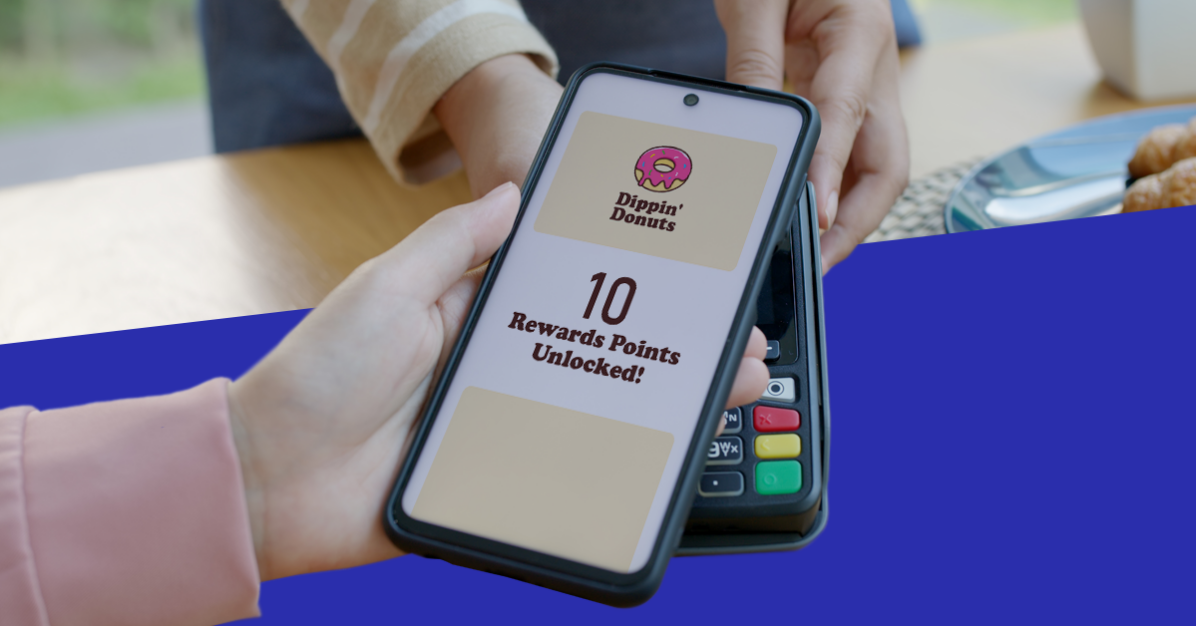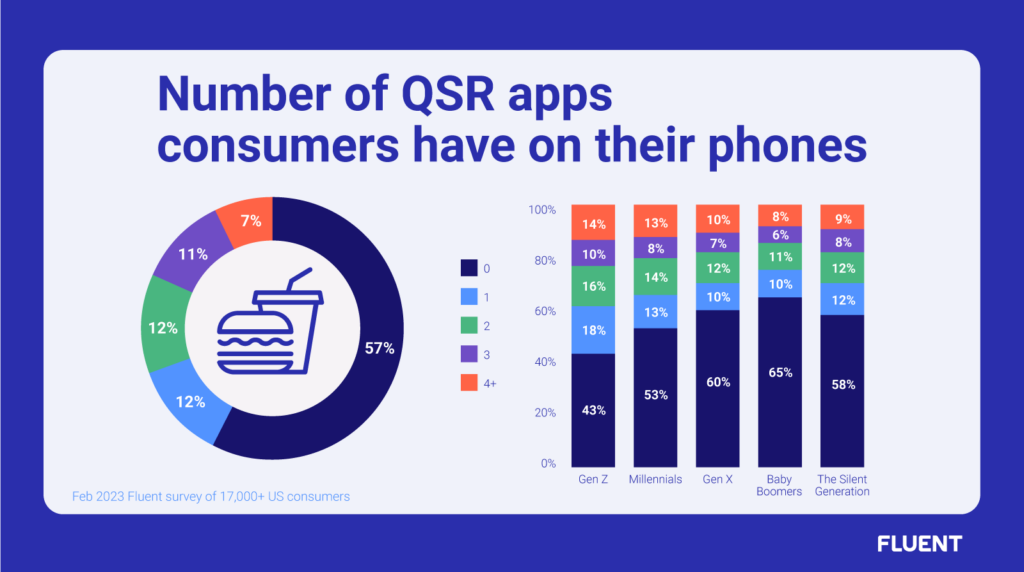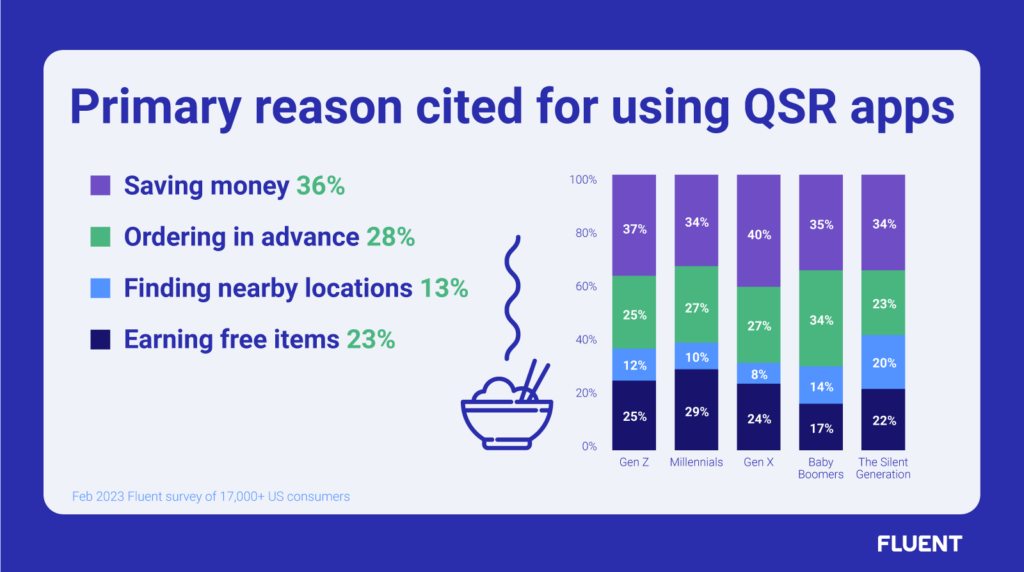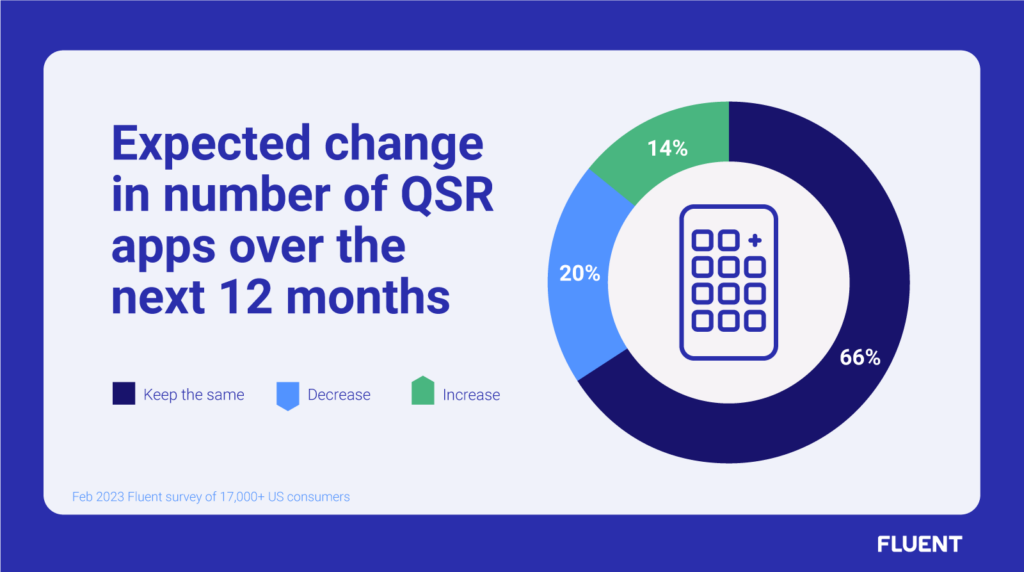Survey: Gaps in QSR App Adoption Call for More Appetizing Loyalty Programs

With inflation continuing to drive up food costs, consumers are turning to reward and loyalty programs from their favorite quick-service restaurants (QSRs) to help ease the strain.
To meet this demand, QSRs have traded outdated punch cards for sophisticated mobile apps. They are integrating ordering, payment, and rewards into a single hub to streamline the customer experience and drive repeat purchases.
We surveyed* 17K US adults across our media portfolio for a snapshot of QSR app usage and future adoption. We’re serving up the findings below and key takeaways for QSR advertisers looking to grow their loyalty programs.
By the Numbers: Insights for Building a Successful QSR Loyalty Program
When done right, a loyalty program can help QSRs acquire new customers and build stronger relationships with existing ones. Read on for the survey results – and be sure to check out our best practices for driving QSR app adoption.
Gaps in mainstream QSR app adoption present an opportunity to engage and acquire new users.
42% of consumers currently have one or more QSR loyalty apps on their phone. They are also 2x more likely than those without QSR apps to download new ones. With a strong taste for convenience, it’s no surprise to see digitally native Gen Zers leading the pack. However, with 57% of all consumers yet to jump on the bandwagon, QSR brands have an opportunity to reach new audiences outside of the Gen Z demographic.

Takeaway for Marketers
Step one for driving new loyalty members? You’ll need an attractive incentive or hook to get people to download your app. This may include freebies, percentage-off discounts, or exclusive access to new or re-released menu items.
For example, when Taco Bell re-debuted its popular Mexican pizza in September 2022, the fast food chain offered early access to its biggest fans – Rewards members.
This promotion encouraged engagement among existing Rewards members and led to a 379% increase in average daily downloads of the Taco Bell app.
The true indicator of success? Even a month and a half later, daily average users were up 14% from where they were before the promotion, proving that exclusive offers help build long-term loyalty even after the initial offer is redeemed.

Source: Apptopia, QSR 2022: Loyalty Do’s and Don’ts
Unique consumer tastes require a tailored approach to messaging.
Saving money is the number one reason consumers cite for using a QSR app, followed closely by ordering in advance. Yet a closer look at the data reveals varying priorities across different demographics. Compared to other generations, Baby Boomers are most likely to use QSR apps for conveniences like ordering in advance (34%). Millennials are most likely to prefer earning free items (29%).

Takeaway for Marketers
Consumers ‘ tastes matter when it comes to messaging, and we’re not just talking about steak vs. carnitas. Building an engaged user base – and successful loyalty program – starts with understanding and catering to the needs of your audience.
For example, after a successful test yielding 30% month-over-month subscriber growth, Yum Brands’ franchisee, KBP Brands, launched an SMS and mobile wallet program delivering personalized offers to KFC customers across 28 states.
Customers who signed up for texts from KFC received messages about limited-time promotions, opportunities to try new menu items being tested in that area, and rewards they could earn via repeat visits to the restaurant.
By sending targeted messages to local audiences based on price, demographics, and regional competition, KFC leveraged SMS to deliver more relevant and timely offers to its customers – all on a one-to-one basis.
A focus on recurring value will be key to maintaining a solid QSR app user base.
Consumers are 43% more likely to delete existing QSR apps versus downloading new ones within the next year. The good news? 66% of consumers plan to keep the same number of apps in 2023, making it more important than ever for QSR brands to drive continued engagement among existing customers.

Takeaway for Marketers
To keep users coming back to your app, prioritize a model that delivers recurring value – such as a subscription or tier-based program. These approaches attract high-intent customers who are willing to pay a fee or spend more with your brand in exchange for better perks.
For example, Panera’s “MyPanera” rewards program leverages a relationship-based approach, rewarding members based on the frequency of visits, spending, and their individual purchases and preferences.
This bold departure from a traditional points system has led to greater engagement and increased revenue. Rewards members now account for more than half of all transactions and spend four times more than non-members.
To strengthen its relationship with existing members, Panera launched its “Unlimited Sip Club,” – the subscription extension of the “MyPanera” program – in April 2022. Offering unlimited self-serve beverages and refills and added benefits like “Sip Club Saturday” offers and VIP challenges, Panera continues to engage its community with exclusive rewards and experiences.
Closing Thoughts on QSR Apps
Overall, gaps in QSR app adoption present an opportunity to upgrade loyalty programs with more personalized experiences and engaging offers. While you’ll certainly want to surprise and delight new customers, it’s important to set clear expectations at the outset. Be sure to outline your loyalty program and what actions consumers must take in order to earn rewards.
Partner with Fluent to Grow Your Loyalty Program
We’ve given you a glimpse into Fluent’s 10 million monthly active users. Ready to unlock the value of our unique audience? Leverage Fluent’s full suite of performance solutions to find and convert new customers and loyalty members today. Connect with us here to get started!
*This survey was conducted online via Fluent’s portfolio of owned and operated media properties. Data was self-reported by 17K US adults from February 14 – 15, 2023. Results are specific to the Fluent audience and not reflective of the general US Population.